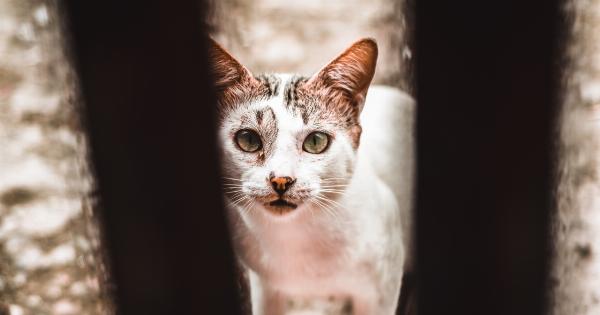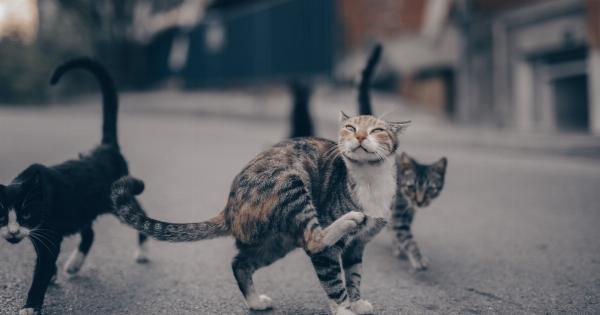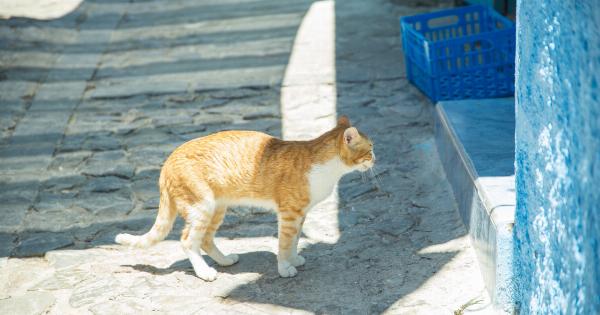Stray cats are a common sight in many neighborhoods, parks, and urban areas. These cats, also known as feral cats, are domestic cats that have either been abandoned or have lost their way and are living on the streets.
As animal lovers, it is natural for us to feel compassion towards these cats and want to help them. One way to do so is by feeding them. However, the question of whether or not it is advisable to feed stray cats is a topic of debate among experts and various organizations.
1. The Importance of Feeding Stray Cats
Feeding stray cats can have several positive impacts. Firstly, it helps satisfy their hunger and prevent them from going through periods of starvation. Cats, like any other living beings, deserve access to basic necessities such as food and water.
By providing them with regular meals, we are fulfilling their basic needs and ensuring their survival.
Secondly, feeding stray cats can help improve their overall health. A well-fed cat has a stronger immune system, which reduces the risk of various diseases and infections. Proper nutrition can also contribute to their overall well-being and longevity.
Thirdly, regular feeding can help tame stray cats and make them more approachable. Stray cats are often wary of humans and may have had negative experiences with them in the past.
By consistently providing food, they may start to associate humans with a positive outcome (i.e., being fed) and become more trusting.
2. The Potential Drawbacks of Feeding Stray Cats
While feeding stray cats with good intentions, there are some potential drawbacks to consider as well. One concern is the overpopulation of stray cats.
Feeding them without implementing effective sterilization programs can contribute to the increase in their numbers. This can lead to overcrowding, competition for resources, and negatively impact the overall welfare of the feline population in the area.
Another issue is the dependency of stray cats on human-provided food. When cats rely solely on humans for their meals, they may lose their natural hunting instincts and become completely dependent on handouts.
This can limit their ability to survive in the wild and adapt to changing circumstances.
Feeding stray cats also comes with financial implications. While it may seem like a small expense, the costs can add up, especially if multiple cats are being fed regularly.
Some individuals and organizations may not have the necessary resources to sustain long-term feeding programs.
3. Striking a Balance: Responsible Feeding
So, what is the best approach when it comes to feeding stray cats? It is crucial to find the right balance between compassion and responsible action. Consider the following guidelines for responsible feeding:.
3.1 Establish a Feeding Schedule
Set a specific time for feeding the stray cats and stick to it. This helps prevent the cats from becoming solely reliant on sporadic handouts and encourages them to maintain their natural foraging behaviors.
By establishing a schedule, you can also monitor the cats’ health and behavior more effectively.
3.2 Use Appropriate Food
Ensure that you provide suitable and nutritionally balanced food for the stray cats. Consult with local veterinarians or animal welfare organizations to determine the most appropriate diet for these cats.
Avoid feeding them only scraps or leftovers, as it may not provide the necessary nutrients for their well-being.
3.3 Implement Sterilization Programs
Support and promote spaying and neutering initiatives in your community. By sterilizing stray cats, you can help control the population growth and reduce the number of strays in the long run.
Contact local animal shelters or advocacy groups to learn about available programs and how you can contribute.
3.4 Encourage Adoption
If you come across stray cats that appear friendly and sociable, consider reaching out to local animal rescues or adoption agencies. These organizations may be able to provide suitable homes for these cats, giving them a chance for a better life.
3.5 Collaborate with Local Organizations
Team up with local animal welfare organizations or community groups that are actively involved in stray cat management.
By working together, you can share resources, knowledge, and support initiatives that promote the welfare of stray cats in your area.
4. Conclusion
Feeding stray cats can be a compassionate act that helps improve their well-being and survival. However, it is essential to approach this responsibility with care and ensure that feeding programs are implemented responsibly.
Striking a balance between providing food and supporting long-term solutions like sterilization and adoption can help address the challenges associated with stray cat populations. By working collectively, we can make a positive impact on the lives of these vulnerable feline creatures.




























